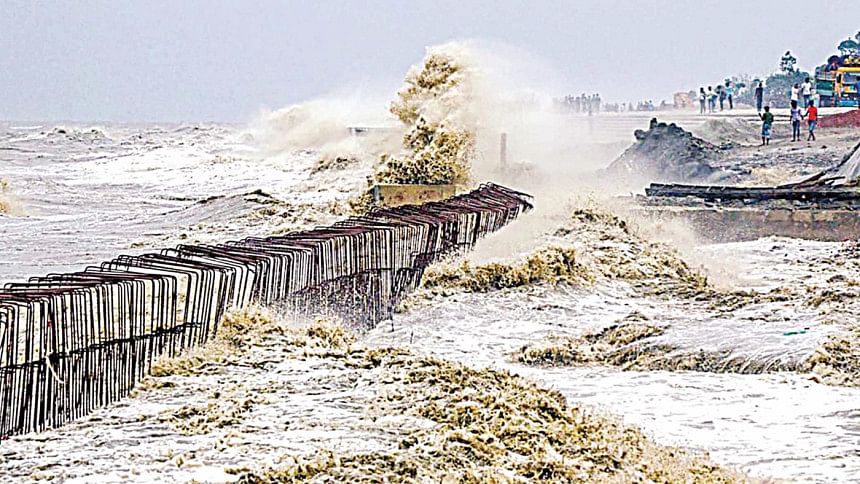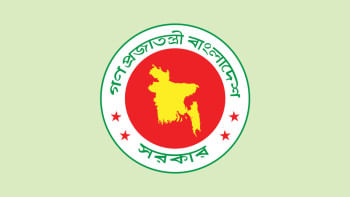Community participation in disaster management

Bangladesh is undeniably the world's most disaster-prone country. Recurring disasters demolish the economic resource base of the poor people and drain out the economic potential. Effective humanitarian coordination aims to ensure the best use of resources to reach the most appropriate and relevant response to the needs of people affected by natural disasters. The impacts and vulnerabilities of disasters could be minimised with proper disaster management planning and by incorporating disaster management activities (risk reduction, response and recovery) with local and national development plans. It is apparent that, effective coordination is an essential ingredient for disaster management. Bangladesh has gained credibility and repute across the world for its disaster management.
The Bangladesh government has taken a number of significant steps during the last decades to build up institutional arrangements from national to the union levels for effective and systematic disaster management. To maintain proper coordination amongst the concerned ministries, departments, line agencies, local government and community people, and also to ensure their proper functioning to diminish sufferings of the people, the government has formulated a set of apparatuses from national down to the grass-root levels. For these mechanisms to be best operative, the Standing orders on Disaster (SOD) act as a guidebook.
As per SOD, Disaster Management Committees are found to be in place starting from the National Disaster Management Council headed by the Prime Minister to the Union Disaster Management Committee (UDMC) headed by the Chairman of the Union Parishad. In accordance with the SOD, UDMC consists of 36 members while the chairperson of the Committee can co-opt a maximum of 3 (three) more members and form groups and sub-groups considering the local situation and special circumstances. UDMC has been given the mandate to act as the rural disaster management entity and it is supposed to play a role in disaster preparedness, mitigation, emergency response and post disaster rehabilitation.
UDMC must ensure that local people are kept informed and are capable of taking practical measures for the reduction of risk at household and community levels, and also disseminate the success stories of reducing disaster risks at household and community levels widely among the local people. It will also hold a hazard, vulnerability and risk analysis at the Union level and prepare risk reduction action plan (RRAP) and contingency plan for earthquake and other hazards. UDMC will facilitate coordination among the development agencies and service providers through quarterly coordination meetings and take decision about implementation of the action plan for risk reduction, as well as review the progress of the risk reduction action plan. It will work to raise funds at the local level to implement the risk reduction action plan.
Unfortunately, local people, particularly from vulnerable groups, have very limited access to UDMC's meeting deliberations and decisions. This largely signifies that the local vulnerable group members have very limited information about the role, mandates and functioning of the disaster management committee on the ground level. There is no evidence of major role being played by UDMC in pre-disaster period. Moreover, disaster risk management is still a secondary priority and not well-integrated into different programmes being implemented by the Union Parishads. Persons who manage and lead Disaster Management Committees are not experts in disaster management but the SOD gave them the authority to coordinate and manage disaster management efforts.

People exposed to disaster vulnerability are deprived and they never get access to what sort of disaster management programmes are being planned and executed by the Upazila and District administrations in Bangladesh. On the other hand, Union Disaster Management Committee headed by the Union Chairman has been in paper as chairman and other members are not well trained about the procedure of committee to run. Besides, Upazila administrations are not supportive to make the Union level Disaster Management Committee effective as resource allocated for disaster management is handled by both officers of the government.
Community participation in UDMC activities builds confidence, pride and capabilities to pursue disaster preparedness and mitigation as well as development responsibilities at the local level. Capacity building and public awareness activities through UDMC enables communities to increase participation and eventually, to sustain even on their own the preparedness and mitigation activities. Moreover, inclusion of two women in each UDMC does not go far enough to ensure that the needs and capacities of women are represented. There is no evidence or analysis available on whether women are able to participate and influence the UDMCs. Support and capacity-building of UDMCs is unmapped.
No single group or organisation can address every aspect of disaster management. Disaster management thinking sees disasters as complex problems demanding a collective response. Coordination even in conventional emergency management is difficult, for many organisations may converge on a disaster area to assist. Disaster management requires strong vertical and horizontal linkages (central-local relations become important).
For managing disasters in different phases, it is vital that governmental and non-governmental agencies contribute to the solution of a common problem instead of individual agencies having ad hoc programmes with diverse goals; to achieve that, it requires institutional arrangements and procedures that facilitate the agencies to participate in executing a comprehensive and commonly shared response plan.
Department of Disaster Management (DDM) is responsible for coordinating and making "disaster risk reduction and response activities of all governmental and non-governmental agencies object oriented and robust". In reality, agencies participate in humanitarian response generally lack shared understanding of the problem. They prepare response plans individually; and often their goals and strategies are so diverse that rarely can they agree to a common objective. Also, in many cases, funding arrangements allow very little flexibility in the individual agencies' plans. As a result, coordination of humanitarian responses becomes hugely challenging.

Primary data about damage and need come from local level disaster management committees through D-form (damage information form). However, the local level disaster management committees lack understanding and skill for data collection and documentation. Also, the system for data storage, compilation and analysis is weak at planning for rapid response.
To mobilise human resource quickly for evacuation, rescue and relief distribution during emergency, it is helpful to establish "volunteer teams" in the community beforehand. There are number of Disaster Management information Centres (DMICs) within the government. There needs to be continued effort and attention to ensure that all stakeholders are sharing information with the government's disaster information management cell and that their depository becomes the "go to" space for disaster related information.
Financing of disaster preparedness, response and recovery is provided by the government and its development partners. To understand if any disaster is adequately funded, there needs to be an up-to-date gap analysis available. There have been attempts in DDM's Annual Report to present the amount of donor funding received for relief, but this information depends on information published by OCHA's Financial Tracking Service (FTS) and so does not include where development money is spent on preparedness or recovery or where small-scale interventions are undertaken.
The Local Disaster Management Fund is important because of the number of "micro-level" disasters that go unnoticed at the central level, but which have severe effect on a community's resilience. Local authorities, particularly Deputy Commissioners as well as Upazila Nirbahi Officers, should make sincere effort in raising and utilising the local disaster management fund.
The linkage between development and disaster management needs to be reinforced. Understanding the root causes of gendered vulnerability is essential if relief and reconstruction programmes are to reduce rather than reconstruct people's risk in future natural events. The gap between policy and practice continues to stymie disaster management and the voice and capacities of disaster affected people in preparedness, response and recovery has not been sufficient.
For effectiveness of the UDMC to address the challenges of community based disaster preparedness, it must organise UDMC meetings on a regular basis both pre, during and post disaster phases; raise dedicated fund for disaster risk reduction; set up disaster warning station in each UP office; construct and maintain disaster shelter centres within the UP complex; form volunteer teams under each UP for emergency response; initiate training on disaster preparedness and emergency response; create social awareness campaign on disaster management; and ensure rapid and timely coordination.
Dr Mohammad Tarikul Islam is an Associate Professor of Government and Politics at Jahangirnagar University. He has been a Visiting Scholar at the University of Oxford and the University of Cambridge. Email: [email protected]

 For all latest news, follow The Daily Star's Google News channel.
For all latest news, follow The Daily Star's Google News channel. 



Comments